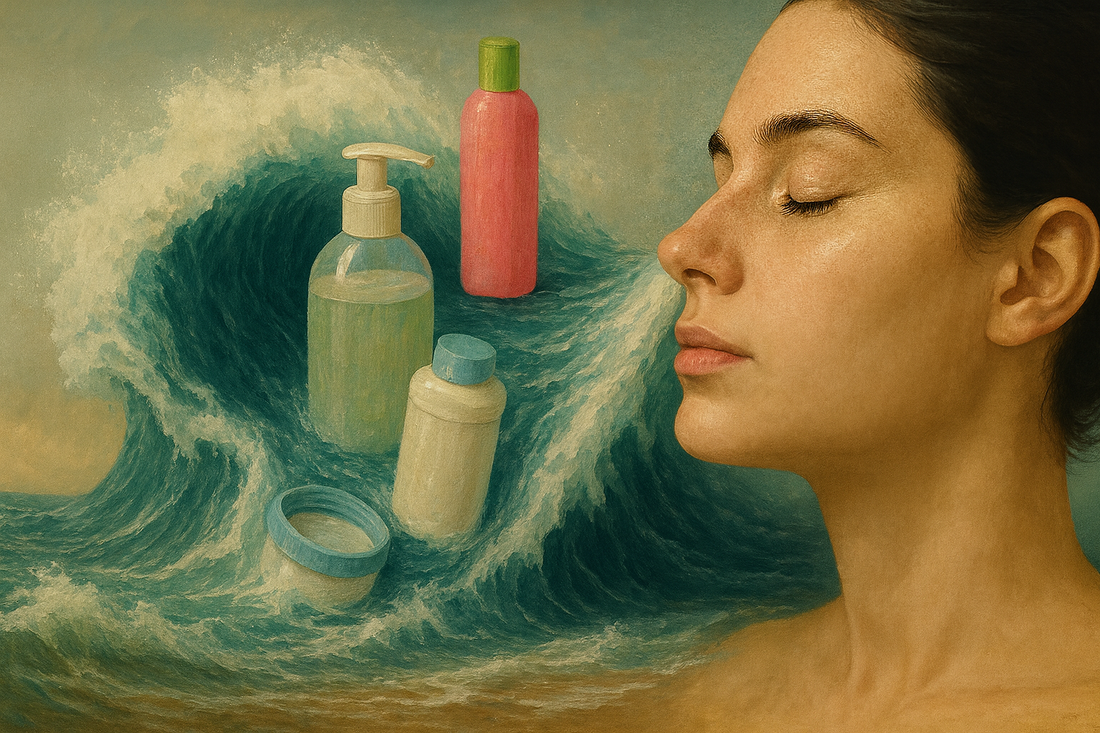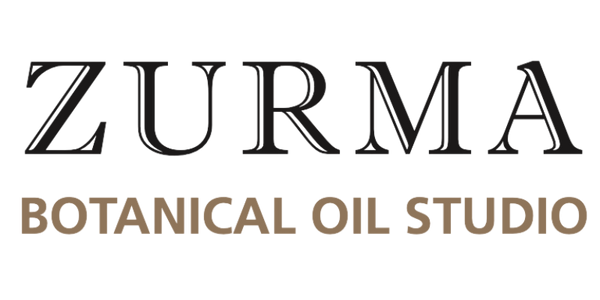
The Invisible Toxic Tsunami & Why Safer Skincare Choices with Zurma Matter
Share
A major international investigation, Toxicity: The Invisible Tsunami, has recently revealed something we can no longer ignore that many everyday cosmetics and personal care products contain chemicals linked to serious health and environmental risks. These products touch our skin, lips, eyes, and hair daily, yet the ingredients inside them often receive less scrutiny than the food we eat.
What’s Hiding in Your Skincare?
The report highlights several categories of chemicals commonly found in personal care products:
- Endocrine disruptors such as parabens and phthalates, which can interfere with hormone systems and impact fertility, metabolism, and development - even at low doses.
- Carcinogens and genotoxins including formaldehyde-releasing preservatives, certain coal-tar dyes, and some UV filters like oxybenzone.
- Heavy metals such as lead, cadmium, and arsenic, often present as contaminants in pigments and colourants.
- Skin sensitisers and allergens like synthetic fragrance mixes and certain preservatives, which are leading causes of contact dermatitis.
- Nanoparticles including some forms of titanium dioxide and zinc oxide, which may behave differently in the body compared to their larger-particle counterparts.
Because cosmetics are applied repeatedly over many years and even decades, the small amounts of these substances can add up over time. The Invisible Tsunami report stresses that it’s the cumulative exposure from multiple products, multiple times a day that matters.
How Exposure Happens
The most obvious route is through the skin. Many ingredients are small enough to penetrate the skin barrier and enter the bloodstream. Others can be inhaled from powders and sprays or ingested unintentionally from products like lipstick or creams. Children, pregnant women, and people with sensitive skin or compromised immune systems are especially vulnerable.
And the story doesn’t end when you rinse a product off. Ingredients from skincare products, shampoos, and makeup often flow down the drain into wastewater, where persistent chemicals can accumulate in rivers, oceans, and eventually even into our seafood.
The Problem with Current Regulations
Unlike medicines or food, cosmetics in many countries aren’t required to undergo rigorous pre-market safety testing. Companies can self-regulate, and some ingredients are protected under trade-secret rules meaning they can be listed simply as “fragrance” or “parfum” without revealing their full composition.
This creates several issues:
- Lack of full ingredient disclosure.
- Incomplete data on the safety of thousands of cosmetic chemicals.
- No assessment of how multiple ingredients interact inside the body.
- “Regrettable substitution” where one banned chemical is replaced with another that is structurally similar, but equally concerning.
Even in countries with stronger restrictions, the report shows that harmful substances can still make their way into products, sometimes as contaminants.
Health Effects Linked to Cosmetic Chemicals
Evidence from biomonitoring studies and epidemiological research links certain cosmetic ingredients to:
- Hormonal changes and reduced fertility in both men and women.
- Higher risk of hormone-related cancers such as breast and ovarian cancer.
- Skin irritation and allergic reactions.
- Developmental and neurological effects from early-life exposures.
While not every product will cause harm, the science shows that lowering our exposure to these toxic chemicals is a smart and proactive choice.
Environmental Impact
The report also warns of the environmental toll. Persistent chemicals from cosmetics - including some silicones, microplastics, and UV filters - have been found in oceans, rivers, and marine life. These substances can accumulate up the food chain, contributing to biodiversity loss and potential re-exposure to humans through seafood.
What You Can Do
The good news? You have control over what you put on your skin.
How Zurma Helps You Reduce Risk
At Zurma Botanical Oil Studio, our philosophy has always been simple: if we can’t trace an ingredient’s source and verify its safety, it doesn’t go in our products. Our Bio Whenua and Zurma skincare products are made with high-quality natural plant-based ingredients, many of them certified organic. We never use parabens, phthalates, synthetic fragrances, petrochemical derivatives, fragrances or parfums or other chemicals of concern highlighted in the Invisible Tsunami report.
Why our customers trust Zurma & Bio Whenua:
- Ingredient integrity - every oil, butter, hydrosol, and extract is chosen for its high quality and proven skin benefits, not because it’s the cheapest or easiest to source.
- Transparency - we list every ingredient, so you know exactly what you’re putting on your skin.
- Naturally preserved - our formulations only use natural and organic approved ingredients rather than synthetic preservatives.
- Sustainable sourcing - we prioritise ingredients grown and harvested in ways that protect people, plants, and ecosystems.
The Benefits Go Beyond Safety
Natural, organic skincare isn’t just about what you leave out - it’s about what you put in. Zurma products are rich in:
- Essential fatty acids to strengthen the skin barrier.
- Antioxidants to combat environmental damage.
- Soothing plant compounds to calm and protect reactive skin.
- Vitamins and minerals to support healthy cell function.
When you choose Zurma and Bio Whenua skincare products, you’re reducing your exposure to the very risks outlined in the Invisible Tsunami report while nourishing your skin with ingredients it can recognise and positively use.
Final Thought:
Toxic chemical pollution from cosmetics is just one part of a bigger picture - but it’s a part you can influence directly. Every time you choose a safer product, you lower your own risks from toxic chemicals and choose a future that cares for your health and the planet.
Ngā mihi,
The Zurma Team
Source: Toxicity: The Invisible Tsunami
